Flip - Multi-Persona Messaging App
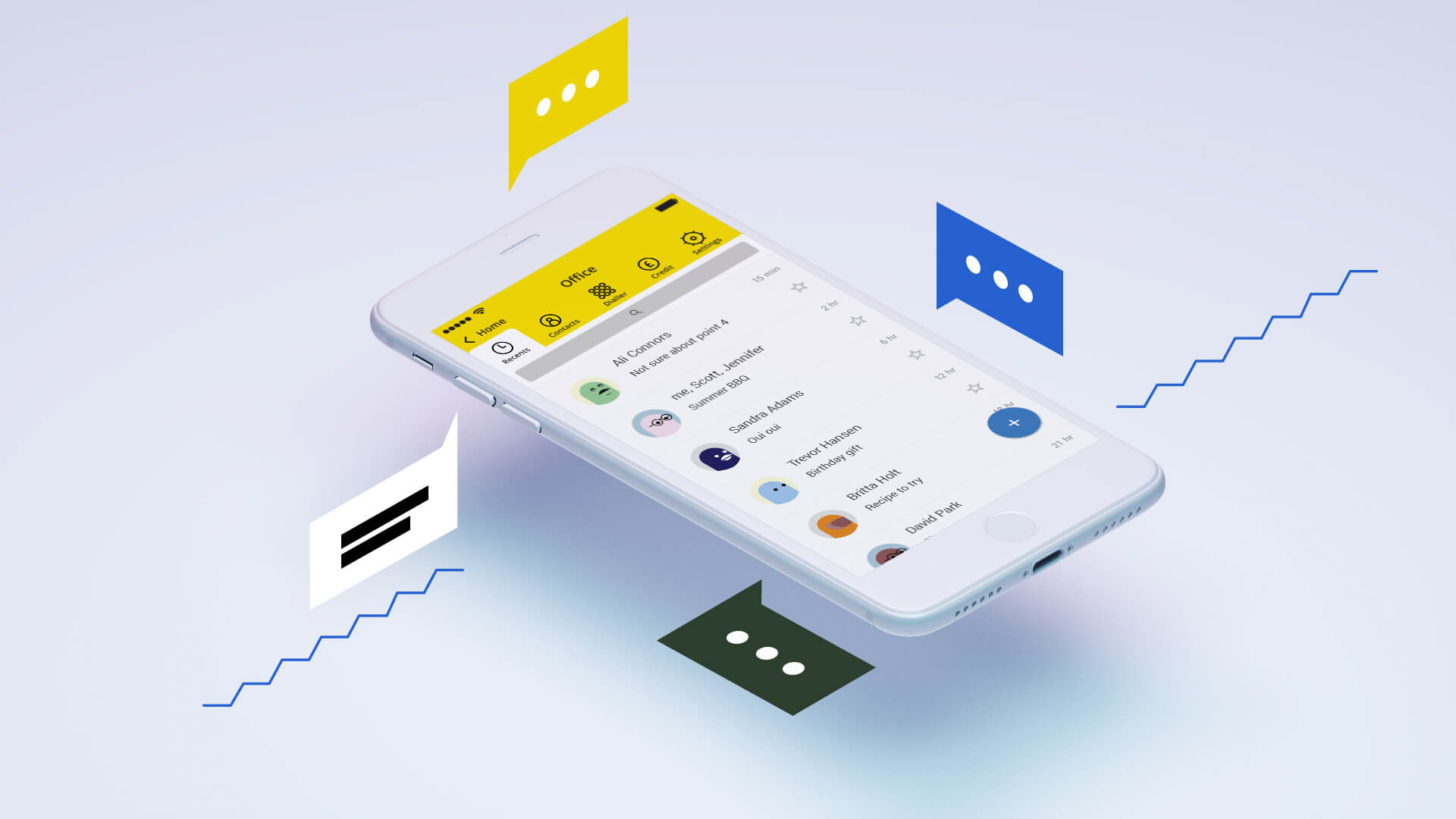
A number for each area of your life.
Problem
- Communication relationships vary between different groups in a person’s life, yet mobile numbers don’t reflect that.
- 14 million people in the UK carry two devices in order to separate work & personal - but many (more than 50% surveyed) found this to be a clunky experience.
Solution
- A mass-market service to allow users to have multiple mobile numbers on a single phone, yet still separated.
- Ability to switch seamlessly between numbers.
My role
- Insight work with customer groups
- Co-creation workshops
- Ethnography studies & service safaris to find existing pain points
- Invision prototyping, user testing & iteration
- MVP build & evaluation
Finding the need: talking to consumers
People already use different apps to split their social groups - that may be WhatsApp for work colleagues, or Snapchat for close friends - they are presenting different personas, different sides of themselves to others. People's lives are multi-faceted and full of different types of inter-personal relationship - friends, colleagues, family, your dentist - all are interacted with differently, and yet on phones, the access-point (the mobile number) is the same for everyone and continues forever, regardless of length of relationship.
Very often people have work, personal and spam email addresses, because email is so widely used - so why haven't mobile numbers caught up?
Interviewees revealed that they either tolerated this poor experience or that they carried more than one phone to manage it. Those that carried two devices had common complaints around charging, the weight of two devices, duplicated apps, and more.
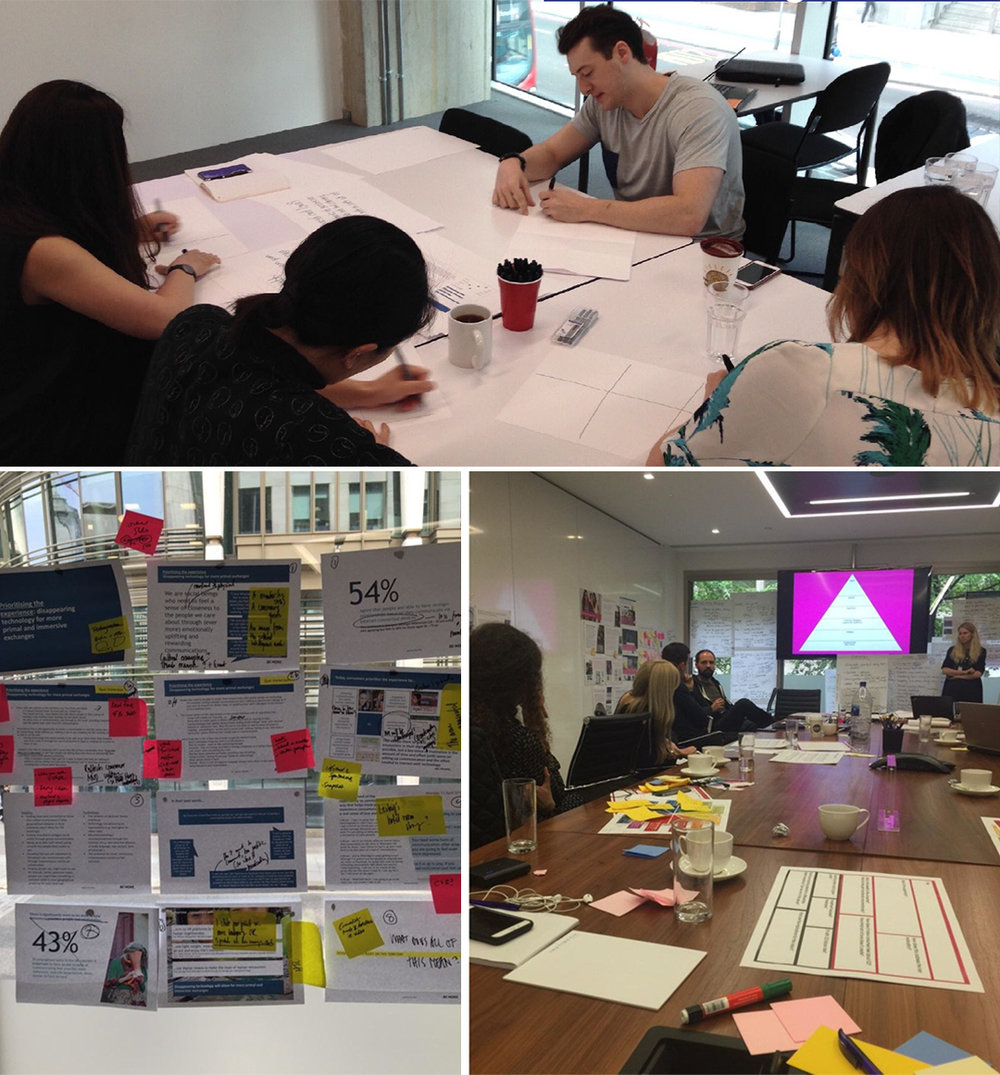
Competitor Information Hierarchies: WhatsApp
Analysis of the leading single-persona messaging apps to develop a framework of UI patterns that can be synthesised into a multi-persona service.
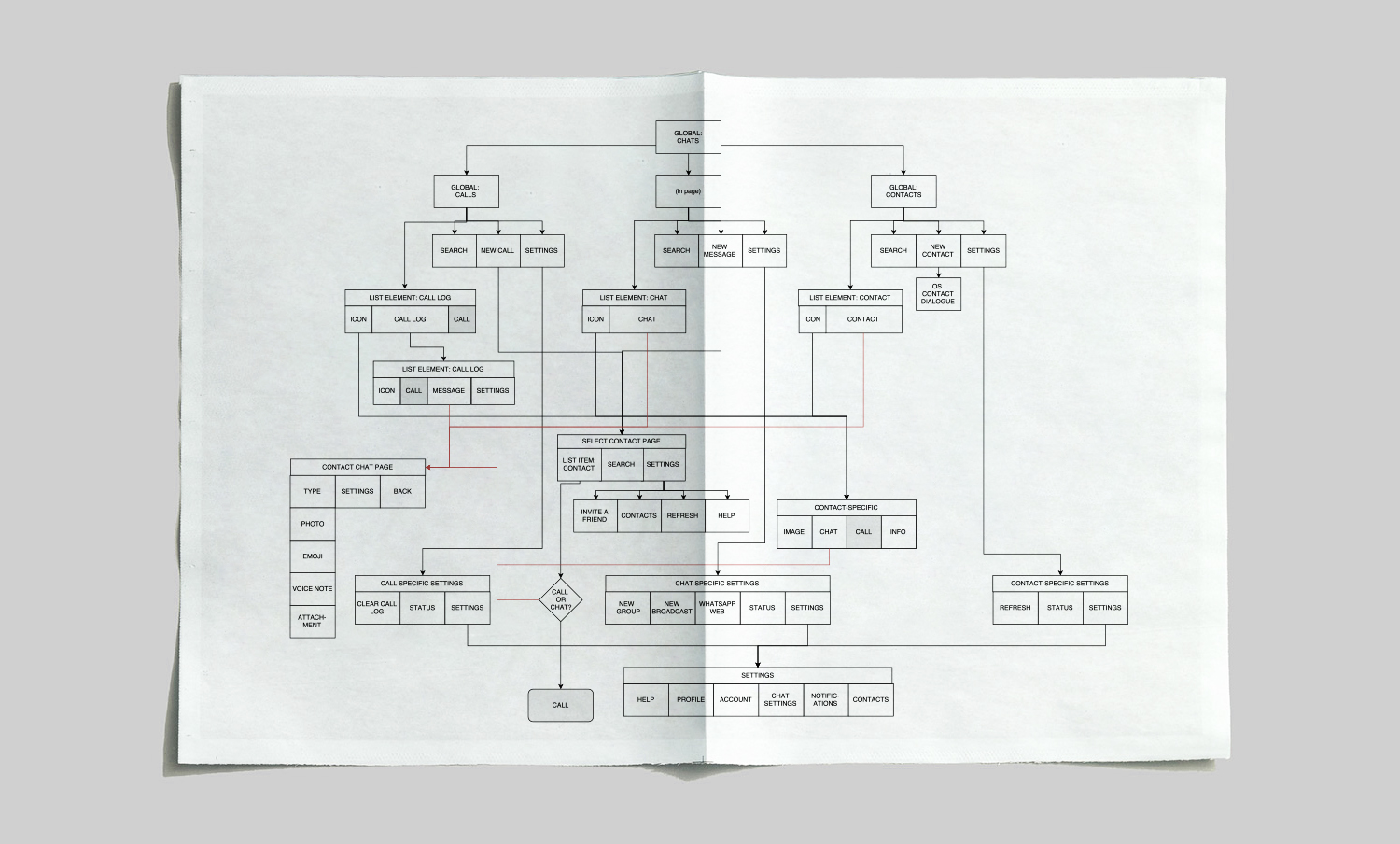 WhatsApp Messenger information hierarchy
WhatsApp Messenger information hierarchy
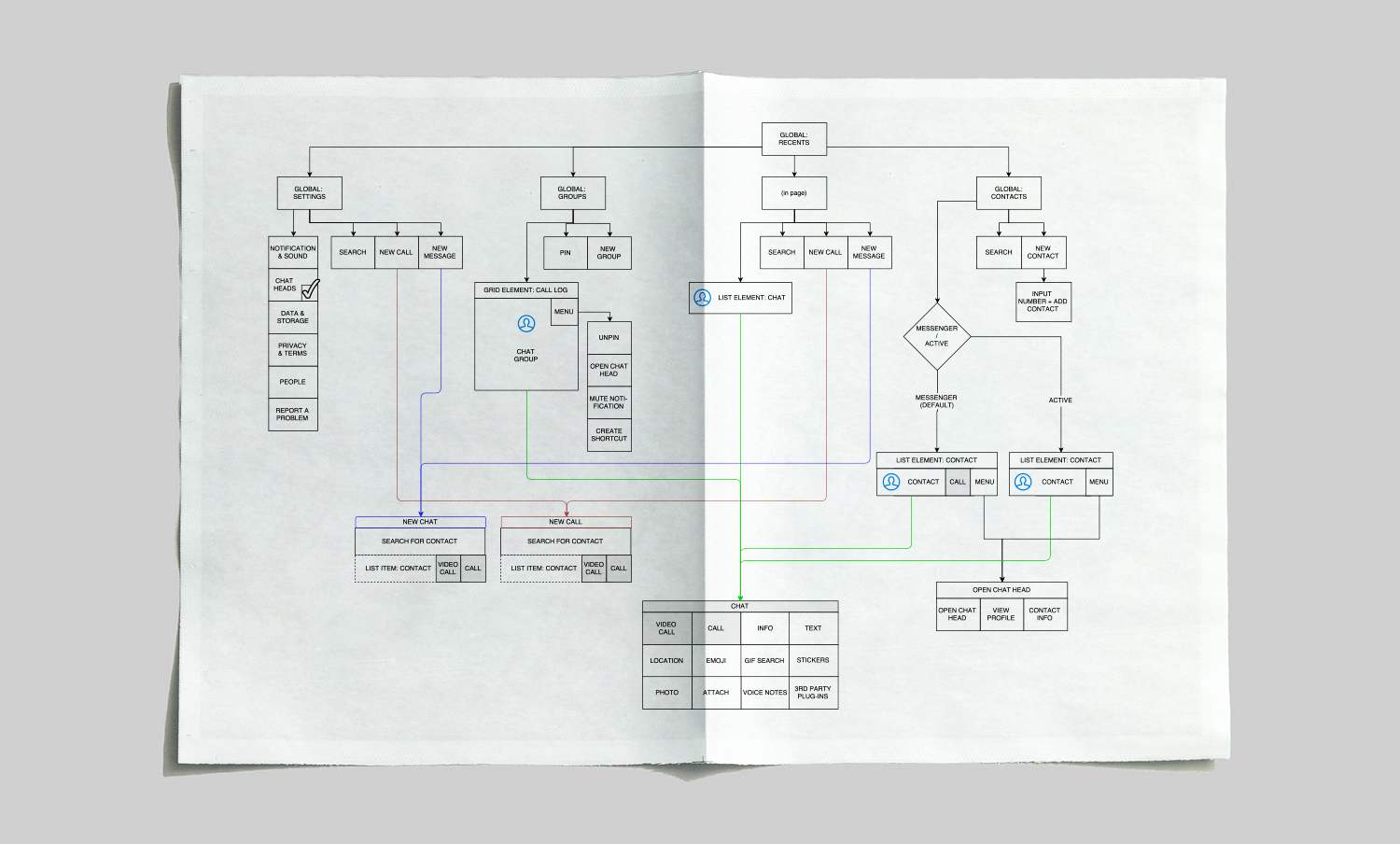 Facebook Messenger information hierarchy
Facebook Messenger information hierarchy
Co-creation
A number of co-creation workshops revealed some commonalities with user expectations of the format of the service:
- A dashboard page where all the user's different numbers would be visible in one place An expectation to be able to use numbers to perform all of the functions of a traditional phone (calls, text, voicemail)
- Being able to customise the number, choosing a name
- Highly visible number for easy sharing
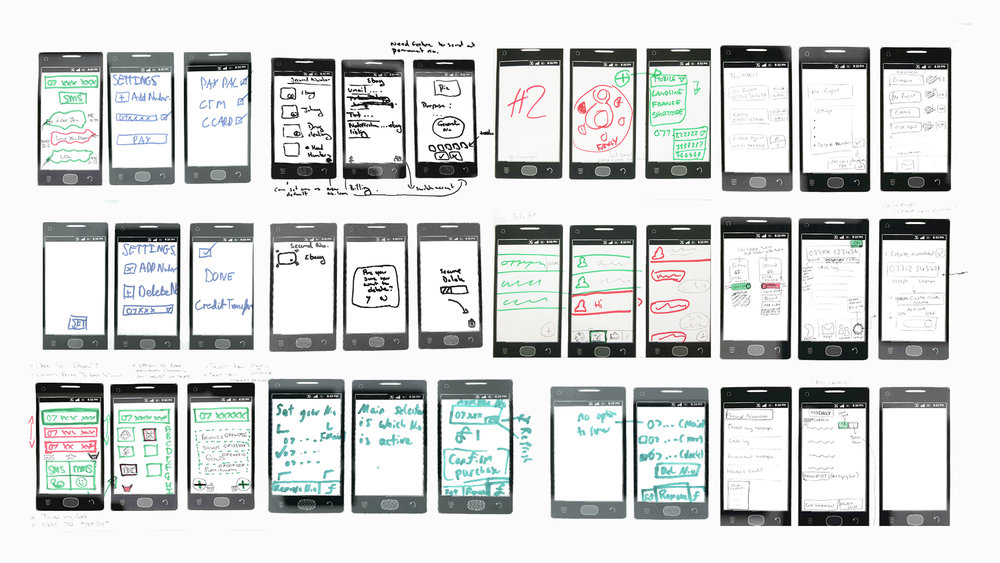
Service Safaris & Observations
I ran a diary study with a 1st technical prototype to better understand the problems that consumers find with separating the different parts of their lives. What became clear was:
- Importance of not mixing content between numbers so that the user doesn't accidentally message from the wrong number.
- Need for clarity over what number the user was currently in, and that if they take an action, it will go from that number.
- Users want different features for different numbers, because they will be used differently.
- Users want to be able to bill work numbers independently, for the purposes of business expenses.
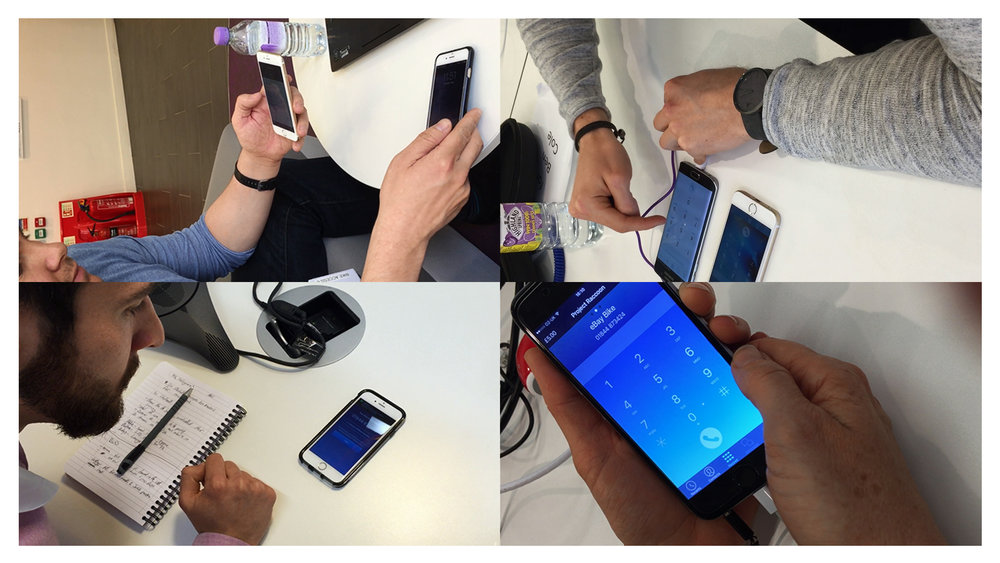
Design Principles
- No cross-contamination. Each number is sandboxed from others: separate contacts, notifications, messages & call-logs.
- Each number is an eco-system. Separate billing setup, and attachable extra features.
- User clarity on active number.
Information Architecture

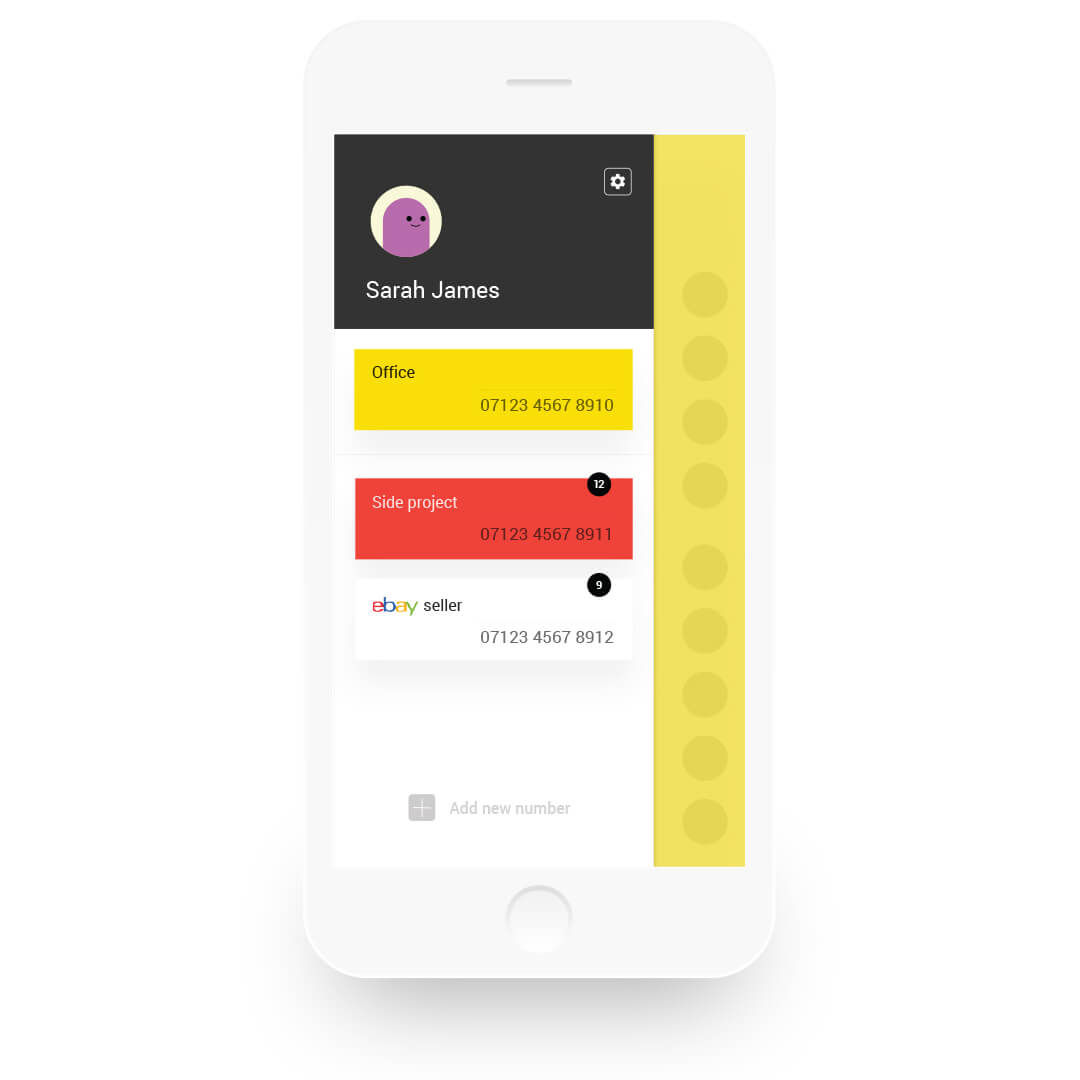
Separation
We know that it's important to keep different parts of your life separate - that's why people use different apps for different social groups, why people have work and personal emails and why people carry work and personal phones.
Using that understanding, I designed a framework which allowed what seemed impossible - bringing multiple personas together, but keeping them perfectly separated.
The numbers are entirely sandboxed from each other, with different contacts, call logs, settings and billing. The number switcher drawer is accessible at any time, allowing quick switching between numbers, access to global settings & purchase of new numbers.
It is always clear which number the user is currently viewing, through consistent colour coding, titling, and a movement between sections (see 2D Spatial Mapping section later on).
Conversations, not calls & texts
Flip is all about relationships, and letting the user manage that.
A conversation is a touch-point between two or more people - the medium used doesn't matter. This is why people typically use whatever they used last; they don't care which medium that they use, and most services don't differ much (feature parity).
Dividing lines between calls, texts, different apps are somewhat arbitrary - driven by technology or ecosystem, not user behaviour. This creates separated logs between services - a call log, message history, a voicemail inbox, but all with the same people. This creates cognitive effort for the user - they have to maintain a mental map of what person to reach on what service - where did they have the conversation last?
From this understanding of the user's mental model, Flip conversations are brought together - calls, texts, voicemails and more appear as a single flow of interactions between contacts - there are no arbitrary splits between service types.
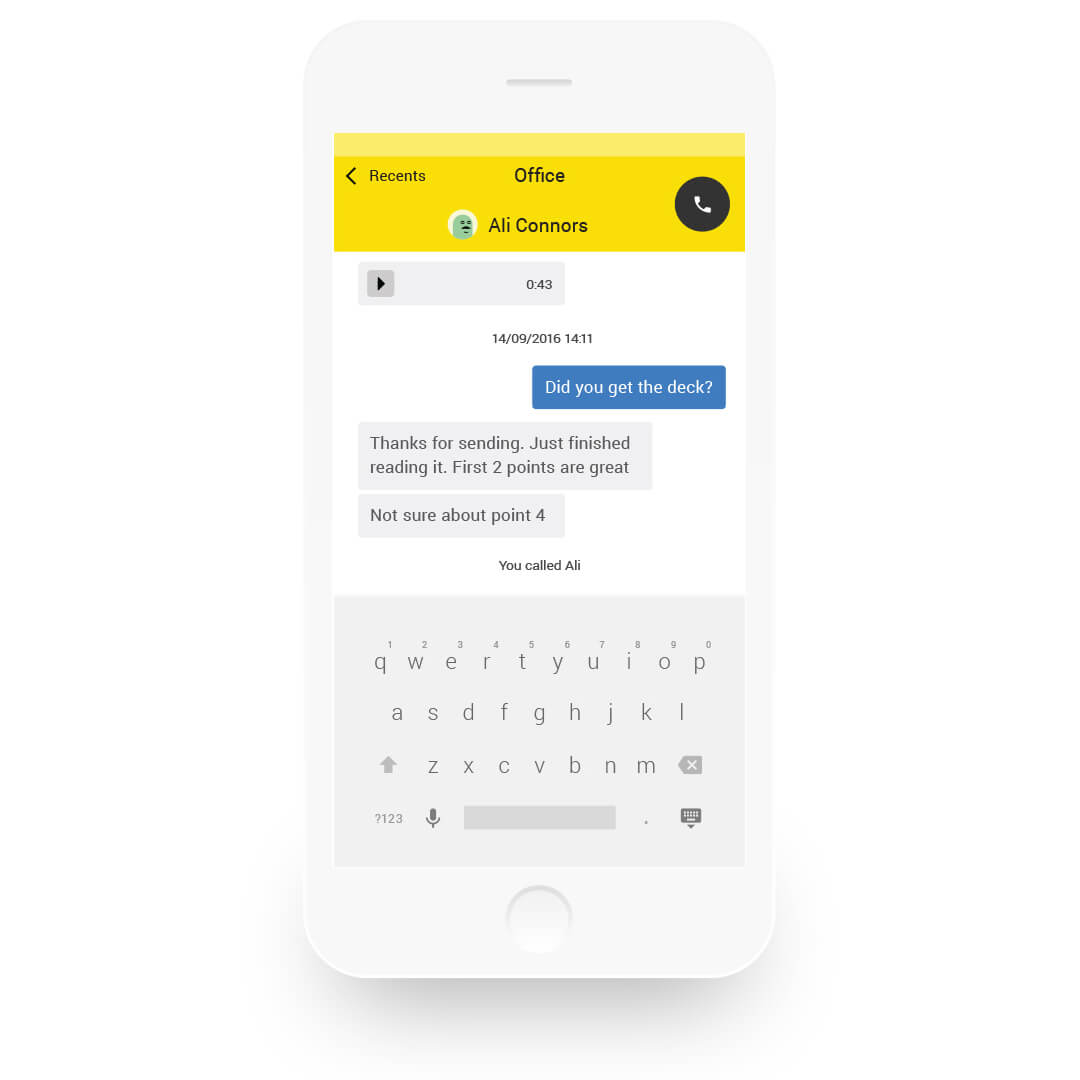

Capability - Use as you choose
Acknowledging that the app is merely a gateway to the utility of additional mobile numbers, we get out of the user's way to let them use as they wish.
Users can acquire any type of number that they like: mobile, geographic and international, and then use as they wish. This is the digital version of a SIM card, which is just a gateway to a utility - something for the customer to use as they choose.
A phone within a phone
All the functionality of a phone, per number.
Each number is an ecosystem, representing a different part of the user's life, with a different set of people (and so a different contact book), and a different usage model. Acknowledging that each number in the app may have a different use case, users can attach different features to different numbers. For example, a business/work number can attach conferencing or other productivity features.
Some sections, such as the dialler, don't actually differ per number (as it is just a numerical keypad), but to create the full sense of separation, it still exists as a section below the number - so each number has a clearly delineated feature-set.
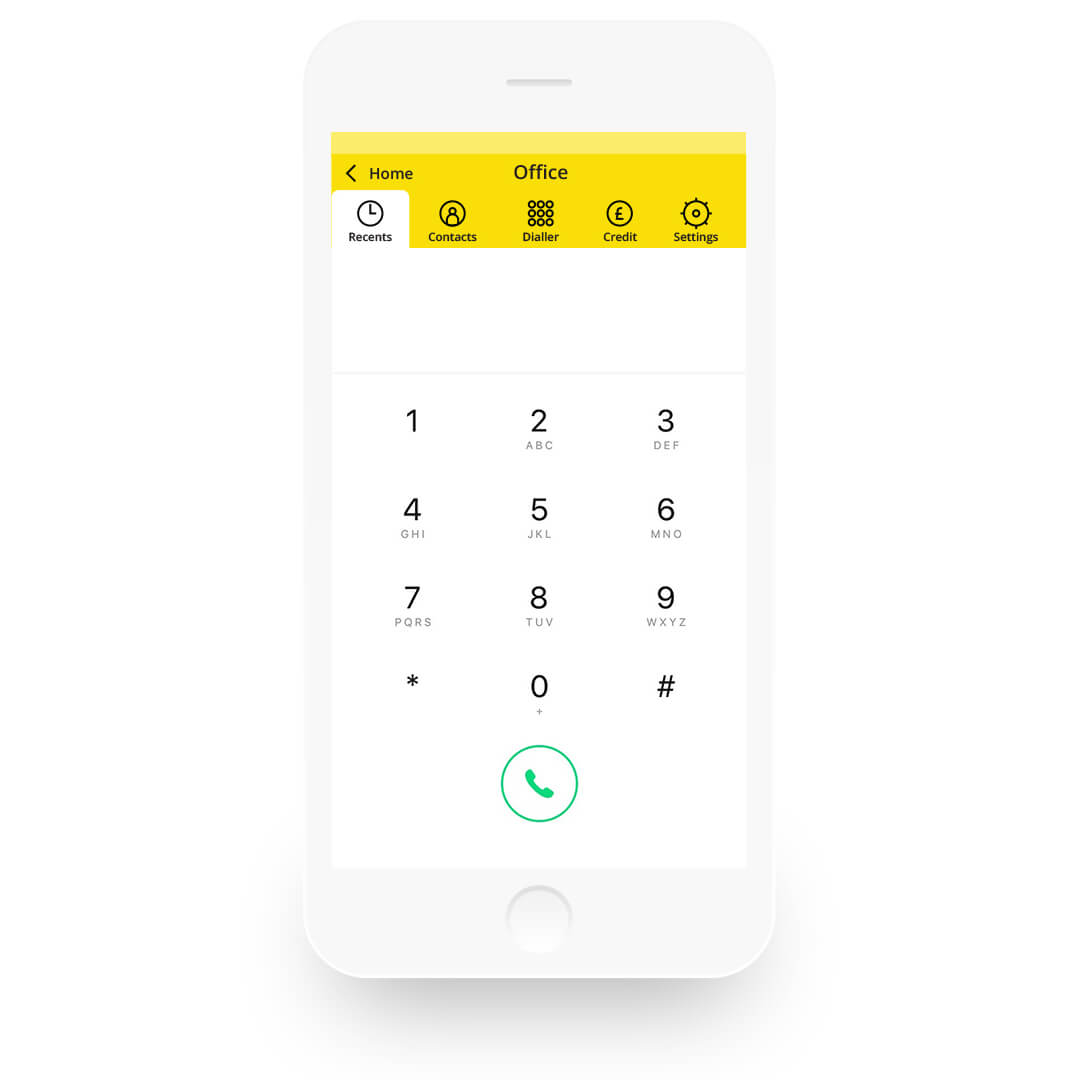

Playful iconography
As a product with an emphasis on letting users create & manage their identity, it is important to position firmly as a safe and friendly consumer app. We have protections on the technical side, verifying against the user's SIM number, but we communicate the product's positive and friendly nature through its behaviour and feel. For example, personifying contacts images with randomly generated characters, adding personality and making the product more tangible.
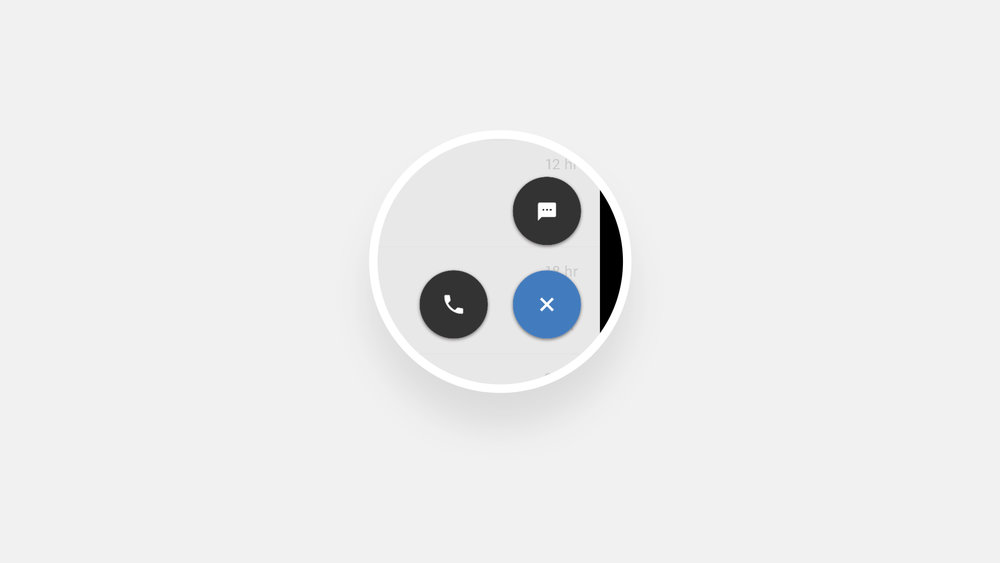
Multiple-entry flows
My interviews and diary studies were fraught with contradictions in terms of how people interacted with messaging systems, with many users starting in different ways, and taking different paths to begin a conversation. After trying a number of approaches, I found the best method was to create access-ways from multiple angles, letting the user start from wherever they were; be it from the contacts panel (people-oriented), the recents (reminder-oriented), or dialler (new contact).
2D Spatial Mapping
Humans apply a spatial logic to everything we encounter, and as such have certain expectations about the way space should behave - even in digital products, and even in just two dimensions. It is particularly important to clearly consider how the user travels through 2D space here, as the 'compartmentalisation' of the user's different personas must be truly complete. To establish this sense of 'compartmentalisation', I made use of 2D distance to communicate travelling 'into' the mobile number (moving right). Switching between number personas takes place by travelling back to the home page (left) and changing track (up/down), and then travelling into the new number (right again).
See below:
Commercial model
- Charging a subscription fee for access to any additional mobile numbers.
- Charging a bolt-on subscription for additional features. For example, conferencing.
- Branded numbers with integration into partner services. For example, an eBay number, with features specific to selling items on eBay.